India is one of the most water stressed countries in the world. With global warming, the Himalayan glaciers are melting fast which is resulting in many perennial streams that feed our rivers to run dry. Demand for water is huge but our limited resources are highly polluted and mismanaged. We have extracted so much water from the ground without putting anything back that more than 70% of our nation’s groundwater aquifers have dried up. The result of our collective mismanagement is that more than 600 million Indians face acute water shortage. Water crisis in Cape Town in South Africa and Chennai in South India are warning signs of day zero scenarios unless each and every family learns to respect water and becomes water wise.
HIGHLIGHTS OF THE BLOG
This blog showcases 4 short films that highlight the different Rs of water conservation at the home level based on tried and tested solutions: reducing wastage & consumption, reusing water by giving it extra life, naturally purifying grey water & redirecting it back into the earth and storing rain water & recharging ground water.
This film presents more than 12 practical solutions that individuals and families can easily implement in their homes to prevent day zero conditions when our taps will run dry.
SAVING WATER BY REDUCING WASTAGE OF WATER
Installing Water Aerators in Taps
This film shows a live experiment which shows that putting a water aerator reduces water use by at least 60 percent from the tap.
Key attributes of water aerators
Size: They mostly come in 3 sizes (16 mm, 20 mm, 24 mm).
Shape: They mostly come in round shape but some designer faucets are rectangular and square too.
Type: They help dispense water in 3 forms (mist, spray, foam).
Flow rate: They have varied flow rates ranging from 2 litres per minute to 30 litres per minute.
How does a home owner decide & know which type of aerator to buy?
Sunil Pachar, Sustainability Consultant who supplies water aerators to individuals, residential communities, corporates and institutions says that aerators must be chosen on the basis of the purpose for which the tap is used. Aerators for wash basins, kitchen sinks, showers are all different. Size of the aerator can be measured by measuring the dimension of the outlet of the tap which your local plumber can help you with. The most common size in case of the wash basin and kitchen sink is 24 mm.
People can easily save 20-25% of fresh water in their homes just by using aerators as per the below recommended specifications:
Wash basins: Spray type aerator with flow rate of 1-4 litres per minute (lpm) as we can comfortably wash hands at this speed.
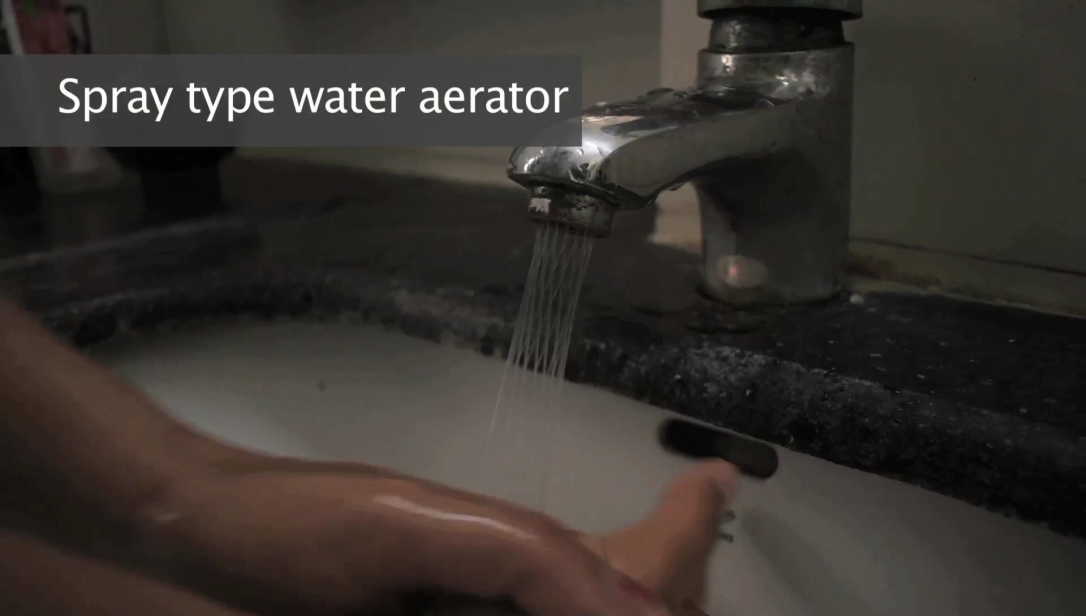
Dish washing: Foam type aerator with flow rate of 5-10 litres per minute as washing utensils needs more water than washing hands.
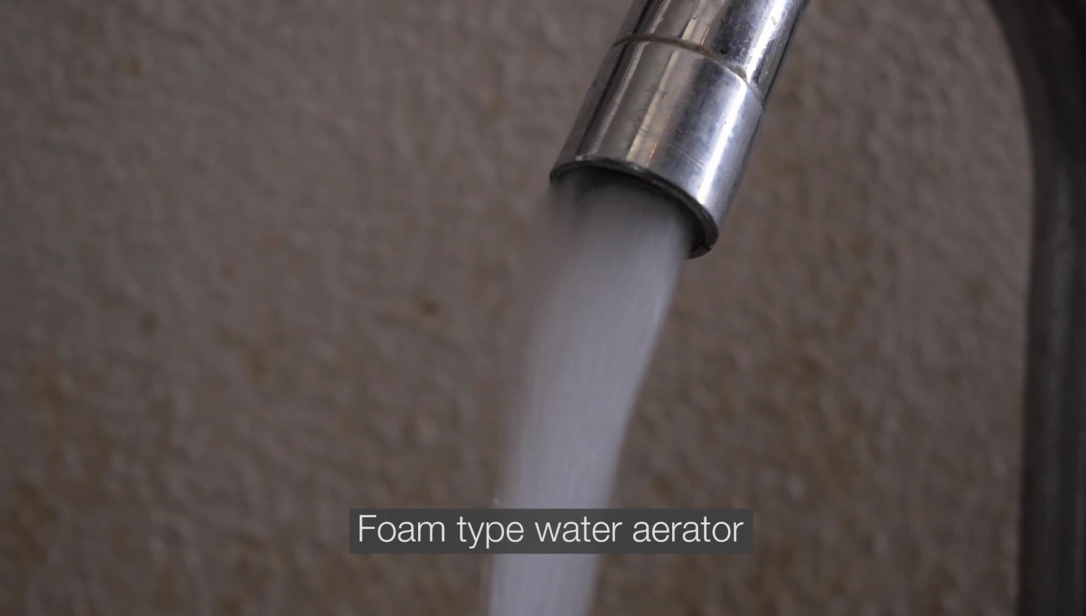
Bath showers: Spray type aerator with flow rate of 9-10 lpm.
Jet sprays: Spray type aerator with flow rate of 2-5 lpm.
Gardening: Spray type aerator with flow rate of 2-5 lpm.
Sunil Pachar can be reached at sunil.pachar@ecolive.in for help in buying the right size and model of water aerators. I personally bought Neoperl water aerators (German based leading global brand) for all the taps in my home from Mr. Pachar and they are working much better than the ones I had bought online earlier. “Neoperl (www.neoperl.net) is the market leader with about 70% of the market share. The other players are too small and do not offer the diversity of water aerators that Neoperl provides. Moreover, the quality of Neoperl aerators is far superior as compared to other brands”, says Sunil Pachar.
Changing Your Existing RO Filter to a Non RO Unit
Reverse Osmosis (RO) is a water treatment process that wastes 3 times water for every one unit of water it purifies. This high water wastage is the reason the National Green Tribunal (NGT) in May 2019 banned the use of RO filters where the Total Dissolved Solids (essential minerals like Calcium, Magnesium, Fluoride etc) in the water are less than 500 mg/l.

If the TDS level of your tap water is less than 500 mg/l and you have a RO water filter installed in your home, you can get your RO water purifying servicing engineer to help convert your existing RO filter into a normal filter unit so you stop wasting precious water.
- You should first get the water quality of your tap water checked for bacteria and traces of heavy metal from any reputed lab in your city.
- If your tap water has any bacteria present in it, you should get your RO water purifying servicing engineer to check if your existing RO system has UV and UF filters (which help to remove bacterial contamination) installed in the unit. If not, these filters can be easily added to your existing unit.
- The water purifying servicing engineer will take out the RO membrane from your existing filter and then your RO can work as a normal water filter which purifies your water without reducing the TDS level of the water and without wasting huge quantities of water in the purification process.
Read this blog for more details. https://healingourcities.org/2020/04/14/impact-of-ro-water-filters-on-human-health-and-indias-water-crisis/
Fixing Leaks Promptly
One drip per second equates to 19 litres of water per day wasted. It is critical to call a plumber and fix leaking toilet flushes, pipes and taps immediately to save huge quantities of water going down the drain. Visit https://wateruseitwisely.com/water-detective-finding-fixing-leaks-save-thousands-gallons-year/ for more information & videos on how to fix leaks on your own at home.
Drinking Water Directly from a Bottle
In my home, everyone drinks water directly from his or her own water bottle so no water is wasted while sipping from the glass and leaving some water in the glass each time which is eventually thrown down the drain while washing the glass.
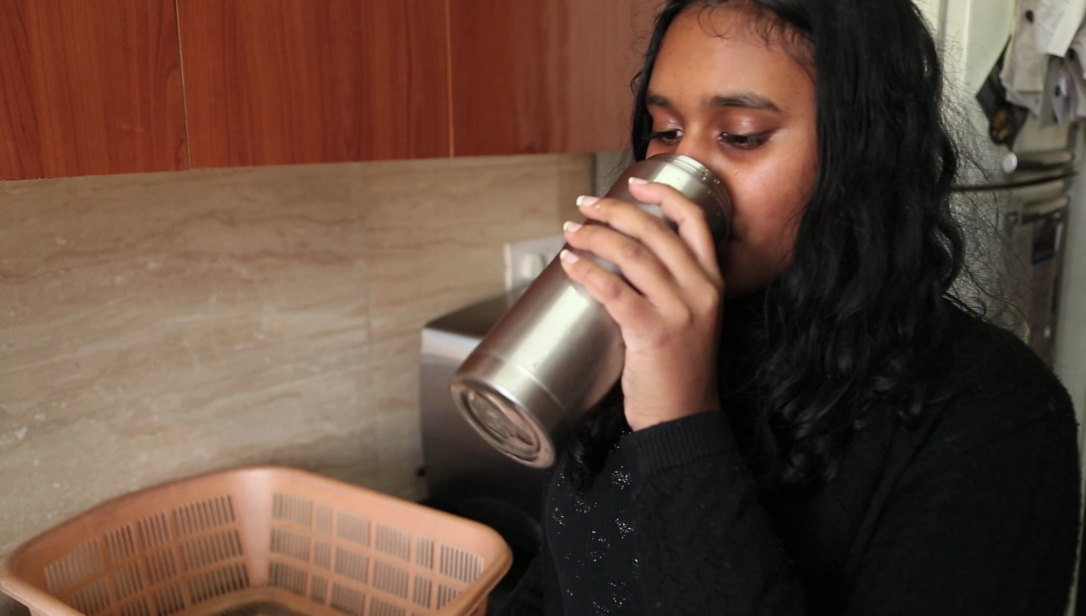
Running Washing Machine & Dishwasher only when Full
Don’t waste water by running loads that are not full. This will save water, time and electricity by cutting down on the number of loads you do in a week.
SAVING WATER BY REDUCING WATER CONSUMPTION
Regularly Checking Your Water Meter Readings
National average of water consumption in urban India for a family of 2 adults and 2 children is 500 litres of water per day i.e. 15000 litres per month. It is important to keep your water consumption less than the national average and try to figure ways of reducing your household water footprint every month. The monthly readings on your water meter should be your guide.
Putting a Weighted Bottle in your Toilet Tank
This helps to reduce the amount of water being flushed each time. We have 4 toilets in my home. I have put a 1 litre bottle full of water in each of the toilet flush tanks. The capacity of each toilet flush is 7 litres. Thanks to the 1 litre bottle of water, each time the toilet flush is used, instead of 7 litres going down, only 6 litres of water is flushed down. On an average each toilet in our home is used about 5 times a day. This easy to implement zero cost solution helps to save at least 20 litres of water everyday in my bathrooms!

Taking Bucket Bath instead of Using a Shower
This saves a lot of water as you know exactly how much water you are using. My daughter and me have disciplined ourselves to use only 3/4 th of a bucket everyday for bathing.
Adjusting the Settings in your Washing Machine
By running your washing machine on manual setting instead of automatic, you can reduce the number of rinse cycles. This helps reduce water use significantly.
Using a Sprinkler to Water your Garden Plants
This saves 50% water as compared to using a hose pipe or watering directly from a can.

Using Mulching to Retain Moisture in the Soil
You can put dry leaves in all your pots and plant beds in your home garden as they form a natural barrier to prevent the soil from losing moisture as a result of exposure to the wind and the sun. This will help reduce water use in your garden by 50%.
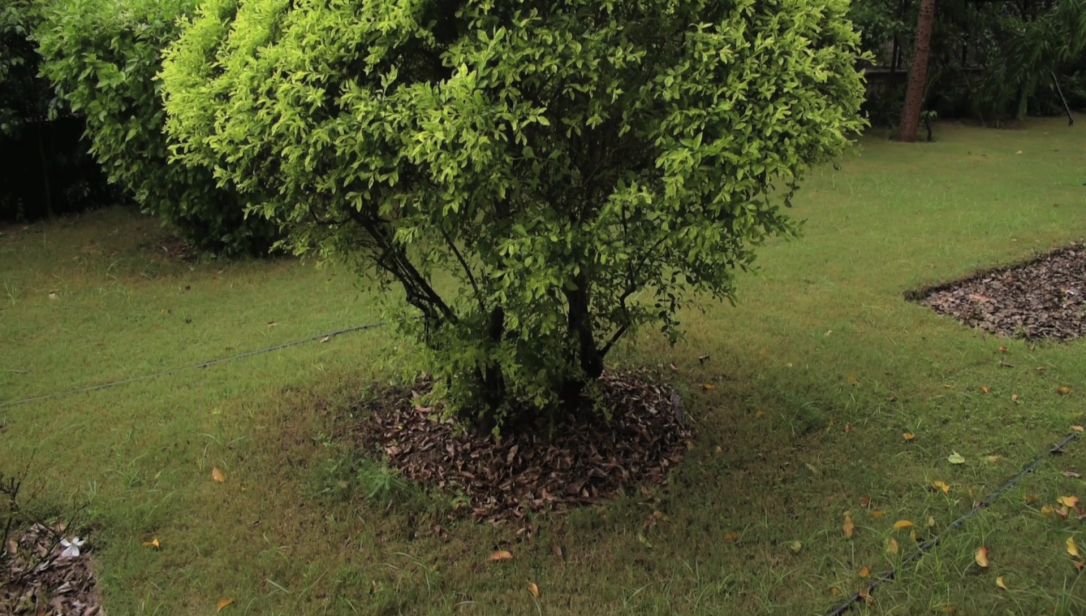
Buying Products that Use Less Water to be Made
While working with farmers in the drought prone Bundelkhand region in Central India in 2012 and helping them shift to growing less water intensive crops, I learnt that barley as a grain uses half the water to be produced as compared to wheat. So in my household, we shifted to eating barley rotis for dinner everyday. They are made just like normal Wheat rotis and are actually lighter for the stomach and more easily digestible. Including more of barley and other millets like jwar, ragi, bajra, makki in your family’s daily eating habits will help reduce your family’s water footprint as millets use less water to be grown as compared to wheat and rice. Millets are also nutritionally more healthier grains!As consumers, we need to be water wise in the choices we make vis-a-vis the products we buy and the services we use.
When it comes to clothes, it takes 2700 litres of water to make the average t-shirt and 7600 litres to make one jean. Avoid purchasing new clothes and re-use, re-purpose, re-fashion, up-cycle clothes as much as possible to save water.
When you send your car for servicing, ensure that the company / garage does not wash the car using gallons of fresh water. As consumers, we need to be water wise in the choices we make vis-a-vis the products we buy and the services we use.
SAVING WATER BY REUSING TO GIVE IT EXTRA LIFE
Collecting and Reusing Water Dripping from Air Conditioners
The water dripping from the ACs can be collected in a pot in your balconies and used for feeding birds or watering plants.
Reusing Reject Water from your RO Filter
If you do need to need to use the RO filter in case the TDS of your tap water is above 500 mg/l, please ensure that you collect the RO waste water in a drum and reuse it for any or all of the following purposes:
- Mopping the floors
- Washing clothes
- Cleaning utensils
- Flushing toilets instead of using fresh water
- Diluting with normal tap water and using for watering plants
Collecting and Reusing Water Used in the Kitchen

Reusing the water for watering plants
I have personally kept a small bucket in my kitchen which is used to collect the extra water that is drained after cooking rice or pasta, left over water after grains, pulses, green leafy vegetables are washed and any water that is left in glasses or water bottles before they are washed. This is nutrient rich water. I use it to water my home plants.
Reusing the water for mopping the house
Rolly Jain, a homemaker from Gurgaon washes fruits and vegetables using a home made natural cleanser made by mixing bio enzyme, soda and a little salt. Since this water contains soda and salt, it cannot be used for watering the plants. Rolly reuses the left-over water for mopping her home floors.
To learn how to make bio enzyme at home and understand the importance of using non chemical based cleansers at home, see this Facebook post of Monika Khanna Gulati, co-founder of NCR Waste Matters, a citizen’s awareness and action group in the National Capital Region:
https://m.facebook.com/story.php?story_fbid=10153220661372997&id=533017996
Reusing Water Draining out of the Washing Machine
Giving this water one extra life
This is simple. Just put the drain pipe of the washing machine in a big size bucket to collect the water. If you are using a market based detergent, then you can reuse this water coming out of the washing machine for mopping the floors in your house.
Giving this water more than one life and not letting it go into the drain
Rolly Jain, home maker from Gurgaon says, “Earlier I used to use normal detergent in my washing machine. But as my level of eco-consciousness increased, I decided not to contribute to the horrible state of pollution of our groundwater and water bodies by using chemical based washing detergents. I started making an eco-friendly natural liquid detergent at home.”
Process of making natural environment friendly cleanser to wash clothes:
Make bio enzyme – You can follow instructions given in this post https://m.facebook.com/story.php?story_fbid=10153220661372997&id=533017996
or follow this video:
https://www.youtube.com/watch?v=Bg5uGfLqSKM
Make reetha liquid – Soak about 25 pieces of reetha in 1 litre of water for 24 hours. Then boil this mix for 30 minutes. Let it cool down. Strain the liquid from the reetha balls. The leftover reetha balls are biodegradable and can be easily composted so put them in your food waste bin.

Make homemade natural liquid laundry detergent – Mix 1/3 rd portion of bio enzyme and 2/3 rd of the reetha liquid and store in a bottle.
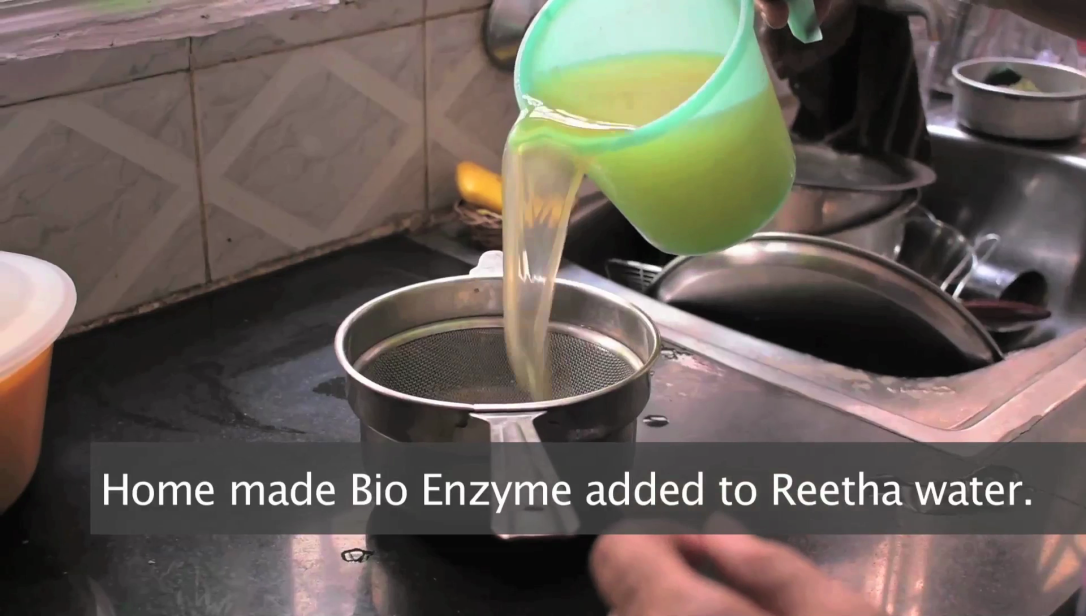
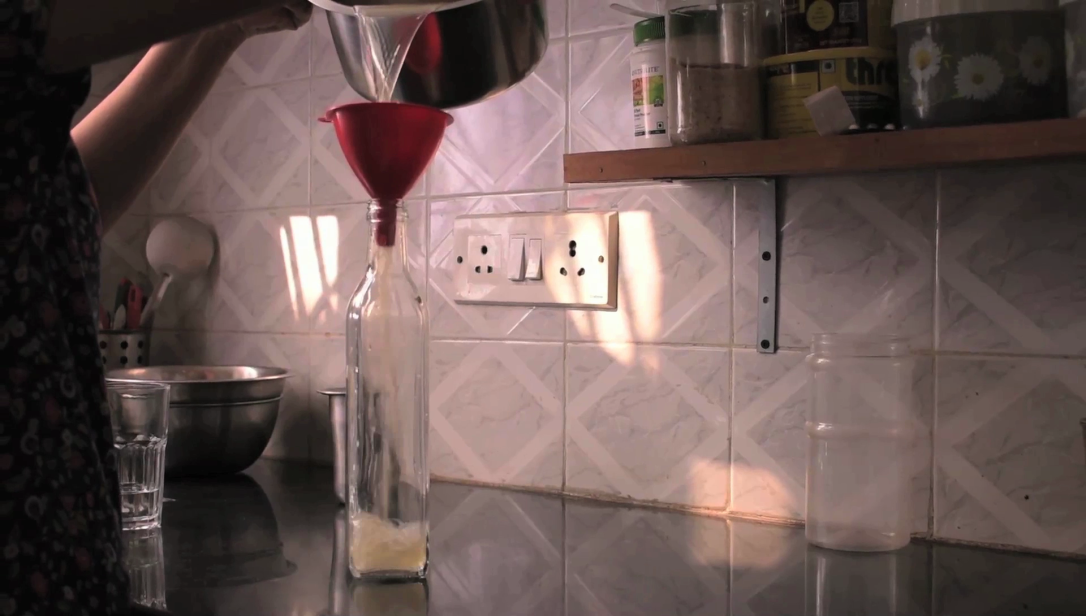
“This liquid detergent lasts for about 20 days. After I started washing clothes using this natural detergent, I stopped using the rinse cycle in my washing machine. So the water required to wash clothes everyday has reduced by 50%. My son used to have a skin allergy which improved after I switched to using this eco friendly detergent for washing clothes as it forms a protective layer on the clothes. Water collected from the washing machine is first used for mopping my house floors and then put in a bucket in my balcony. I reuse this micro nutrient (reetha and bioenzyme) rich water for watering my plants which is very good for their health,” says Rolly. For any clarifications, you can reach out to jainroly@gmail.com

This is how Rolly is able to save 80 litres of fresh water from going down into the drain every single day:
- From the washing machine everyday, about 25 litres of water is collected in the bucket.
- Since Rolly does not rinse the clothes as she is using a natural detergent, 15 litres of fresh water is saved everyday which would otherwise have been used in the rinsing process.
- Another 15 litres of fresh water is saved that would be used for mopping the floors if Rolly had not reused the washing machine water for cleaning the floor.
- Additionally, 25 litres of fresh water is saved that would have been used for watering Rolly’s roof top garden plants if she had not reused the water used for mopping the floor.
“It is a very satisfying feeling to give extra life to every drop of water that we use in our home,” says Rolly proudly.
REUSING TREATED GREY WATER IN HOMES FOR GROUND WATER RECHARGE
Grey water is water from the bathroom and kitchen sinks, bathing area and washing machines. While greywater may look ‘dirty’, it is a safe source of water (after natural purification) to use for cleaning cars and watering your home garden.
Reusing Grey Water is being Extremely Water Wise
According to the Centre for Science and Environment (CSE), more than 70% of water supplied per household per day in India is consumed in the kitchen, in the bathing area and for washing clothes. Treating this grey water, reusing the purified grey water for watering your home garden and then channelising it into the ground will result in:
- Huge saving of water and reduction in your water bill.
- Keeping the grey water out of the sewer system, thereby not allowing it to pollute the local water bodies.
- Improving the ground water table in your neighbourhood.
With 70% of India’s water aquifers having dried up and India facing a huge water crisis, every urban and rural family having an independent house can contribute towards improving our nation’s rapidly depleting ground water levels by implementing grey water management in their homes. This video explains how grey water can be treated and purified naturally in a simple and cost effective way and be directed into the ground to recharge the ground water table where you live.
Steps for Treating Grey Water & Directing it into the Ground
Re-route grey water from the house to the garden
The first step is to re-route the pipes from your bathroom (carrying the water from the washbasins and the bathing area), area where the clothes are washed and the kitchen sink in your house to your garden area such that they do not mix with the pipe carrying the sewage water from the toilet flushes. This would require some plumbing work but is easily doable in an individual house either at the stage where the house is being constructed or even later. Mrs Savargaonkar did some plumbing work in her house much after it was built in such a way that the 3 pipes carrying water from her rooftop garden, washing machine area and kitchen sink drain at 3 different places in the garden patch outside her house.

Make pits to treat and purify grey water in a natural way
Mrs Savargaonkar has got 3 pits dug in her garden for treating the grey water coming out of the 3 pipes. Size of each pit is 1 metre by 1 metre by 1 metre. Each pit has been given a 4 to 6 inch slope at the bottom in the direction of the natural flow of water on the road next to the garden. At the bottom of each pit, gravel has been put for about 6 inches. Above that sand has been put for 12 inches. Whatever place was left at the top, dry leaves were put. Dry leaves act as natural carbon material which is a very important part of the grey water purification process.
“When I started doing the grey water filtering process, I realised that with water going into the pits, the dry leaves would get compacted. I simply put more dry leaves on the top of the pits. In addition to dry leaves, you can also use wood husk, dry tree branches, tree barks, crop husk, plant residues (any of these or in combination) as carbon material in the grey water purification pits,” says Poornima Savargaonkar.
Put naturally water purifying plants around the grey water pits
After 3 months, Mrs Savargaonkar planted naturally water purifying plants such as Kaina, Banana, Syngonium, Umbrella Palm and Spider Lily around the 3 grey water pits in her garden.

“I do not use non-chemical based natural detergents for washing utensils and clothes in my home but use commercially available soaps and detergents. This soapy grey water is filtered through the layers of carbon rich dry leaves, sand and gravel in the pits before it reaches the ground. These water purifying plants do the job of soaking the leftover chemicals in the grey water. This ensures that the water going down into the ground is pure, chemical free water. Banana plant has been specifically put next to the water outlet pipe from the kitchen which has only the non-soapy water that drains out after washing vegetables, grains and pulses. This nutrient rich water helps in getting good quality bananas for consumption by my family members,” says Mrs Savargaonkar.

Use natural insecticide to keep mosquitoes & bugs away from the grey water pits
Twice a year and specifically once before or after the monsoon rains, Mrs Savargaonkar puts a handful of Rakh (powder obtained from burning of wood) or Choona (lime used in construction of houses) in the grey water pits as this acts as a very effective natural insecticide to keep mosquitoes and bugs away.

I personally found no smell or saw any stagnation or any mosquitoes or bugs around Poornima Savargaonkar’s grey water pits and can personally vouch for how happy the plants in her garden looked! If every family who has an independent house in India (in every village, every town and every big city) implements grey water management like Mrs. Savargaonkar, we as citizens can make a huge difference in improving the depleting ground water levels of our country and avoiding day zero scenarios when our taps will run dry.
For any clarifications on grey water treatment talked about above, reach out to poornima.skar@gmail.com
STORING RAIN WATER & RECHARGING GROUND WATER
Every year, India gets monsoon rains but we capture less than 10% of it. This is one of the main reasons why more than 70% of our country’s groundwater aquifers have run dry as we are only extracting water from the ground but not putting anything back. Environment problems are best sorted if they are tackled at source. We need to respect the rain that falls on our roof top and not let it flow into the gutter.
This film shows how an independent house can save lakhs of litres of water during the rainy season every year by a very simple way of storing the rain water in an underground tank and redirecting the overflow into a groundwater recharge pit.
Steps for Rain Water Storage and Ground Water Recharge in an Independent House:
- Slope of the rooftop in your house should be towards the drain outlet on the roof so the rain water falling on the roof easily flows to this outlet.
- There should be a steel wire mesh put on this outlet which provides the first level of filtration before this rain water goes into the pipe.
- Rooftop surface must be kept relatively clean so the water does not collect too many impurities.
- A filter should ideally be put to clean this rain water before storing it. You might have to break the wall a little to trace the pipe carrying the roof top rain water down.
- Make an underground tank to store the rain water. After the storage tank gets full, the excess rain water can be re-routed to the ground water recharge pit in your house.
- Recharge pit can be made by using sand, gravel, pebbles as filtration media.
“We installed the rainy filter in our house and got a 10,000 litre tank constructed to store the rainwater. With the kind of rains we get in Jaipur (in the desert state of Rajasthan), we are able to collect 1,00,000 plus litres of rain water every monsoon which we use for all our household chores during the rainy season (for our drinking water needs after filtering it in the kitchen, cooking, washing, mopping, gardening etc) instead of using municipal piped water or the ground water. This helps to reduce our water footprint in a big way and improve the ground water levels in our neighbourhood,” says Sunil Pachar. Mr Pachar can be reached at sunil.pachar@ecolive.in for more details.
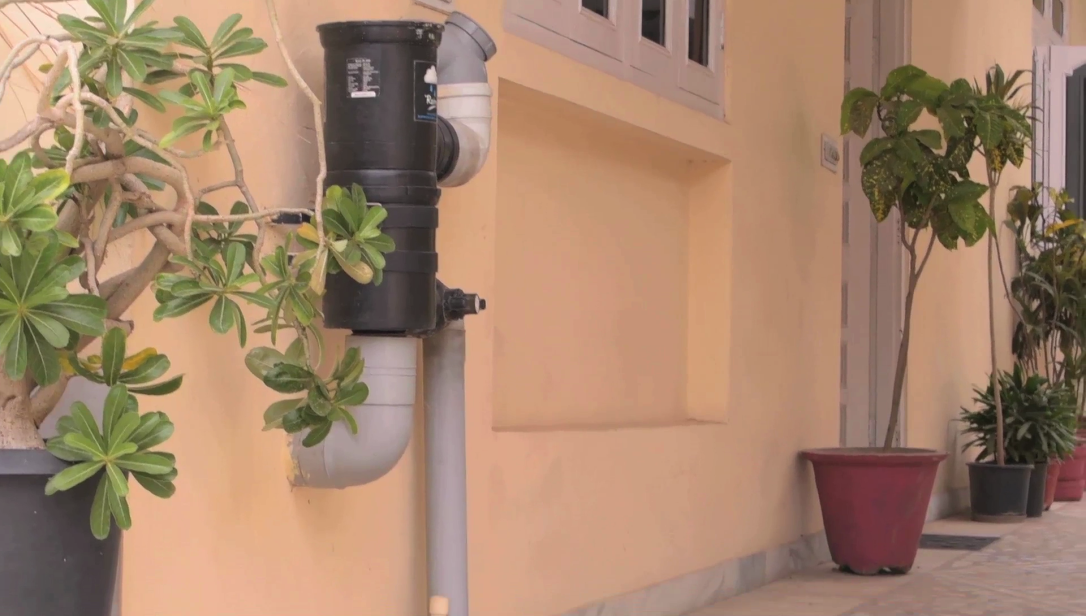

For more information on rainwater harvesting and groundwater recharge, please visit the following links:
https://www.indiawaterportal.org/questions/frequently-asked-questions-faqs-rainwater-harvesting-rwh
India is one of the most water stressed countries in the world. This water crisis is impacting more than 60 crore people across the country. In this scenario, disrespecting water by not using rain water which is a free gift from nature that we get year after year and allowing it to flow into the drain is criminal. Doing both rain water harvesting (collecting and storing rainwater) and groundwater recharge in every house in India will ensure that our country’s ground water levels go up and we do not see day zero conditions when our taps will run dry.
FEEDBACK
For any comments, feedback or clarifications on this blog, please write to the author Neelam Ahluwalia at this email id: healingourcities1@gmail.com
OTHER WATER BLOGS & FILMS ON THIS WEBSITE
https://healingourcities.org/2020/02/23/water-rich-communities/
https://healingourcities.org/2020/04/27/recycling-grey-water-in-homes-natures-way/
https://healingourcities.org/2020/04/27/water-aerators-reduce-water-use-substantially/
https://healingourcities.org/2020/04/28/rain-water-harvesting-and-recharge-at-home-level/
https://healingourcities.org/water-management/

